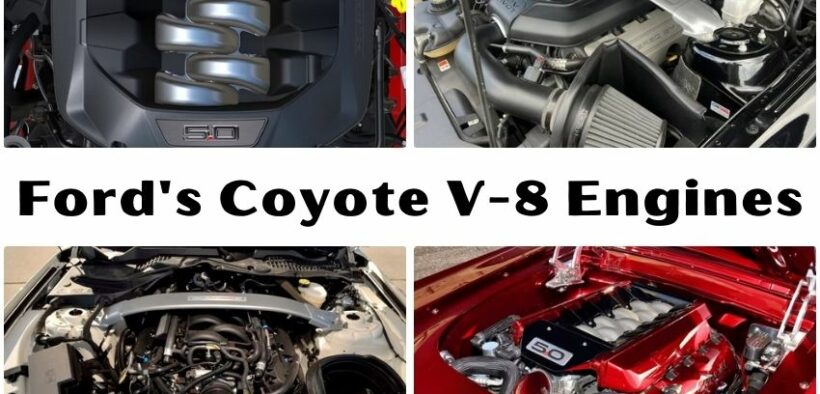Tracing the Evolution of Ford’s V-8 Powerhouse – Which Version Dominates?

The Ford Mustang, a symbol of American muscle, has continuously evolved over its seven generations, with each iteration showcasing technological advancements and performance enhancements. At the heart of this iconic Pony car lies the formidable Ford Coyote V-8 engine, a powerhouse known for its tuning potential and raw performance. Let’s delve into the lineage of Coyote engines, ranking them based on their capacity for tuning and power output.
Unveiling the Latest Iteration
The fourth-generation Ford Coyote V-8 represents the pinnacle of performance, introduced alongside the seventh-generation Mustang (S650). Boasting dual throttle bodies and improved cooling, the Gen-4 Coyote sets new benchmarks with its 100 hp per liter output. Enhanced by software tweaks and a revamped intake manifold, this iteration promises exhilarating power delivery and unparalleled performance.
Embracing High-Performance Heritage
In 2012, Ford resurrected the legendary BOSS 302, featuring the Road Runner variant of the Coyote V-8. Renowned for its capability to exceed 1,000 horsepower on stock internals, the Road Runner engine embodies performance excellence. With a 7,500 RPM redline and meticulously revised cylinder heads, it stands as the epitome of raw power and precision engineering.
Introducing Direct Injection Dynamics
The third-generation Coyote V-8, introduced in the 2017 Mustang S550 refresh, heralded a new era of performance excellence. With a higher compression ratio and the introduction of direct injection, this iteration elevated the Coyote’s capabilities to unprecedented heights. Strengthened by a robust block and a 7,500 RPM redline, the Gen-3 Coyote epitomizes the fusion of cutting-edge technology and legendary performance.
 Refining the Mustang Experience
Refining the Mustang Experience
The second generation of the Coyote V-8, debuting in the 2015 Mustang S550, introduced subtle yet significant upgrades. With reinforced connecting rods and revised cylinder heads, the Gen-2 Coyote delivered enhanced power and torque. Maintaining a 7,000 RPM redline and a compression ratio of 11.0:1, it exemplified Ford’s commitment to pushing boundaries and redefining performance standards.
Setting the Standard for Performance
The inaugural Coyote V-8 engine, introduced in 2011, marked a paradigm shift in Mustang’s performance capabilities. With superior fuel economy and variable cam timing, the Gen-1 Coyote set new benchmarks for power and efficiency. Available in two variants tailored for different applications, it paved the way for future innovations and solidified Ford’s position as a trailblazer in automotive engineering.
In conclusion, the Ford Coyote V-8 engines stand as a testament to Ford’s relentless pursuit of automotive excellence. From pioneering innovations to evolutionary enhancements, each iteration of the Coyote engine has redefined performance standards and pushed the boundaries of what’s possible. As enthusiasts continue to unlock the tuning potential of these legendary engines, the legacy of the Ford Mustang and its iconic Coyote V-8 engines will endure for generations to come.









